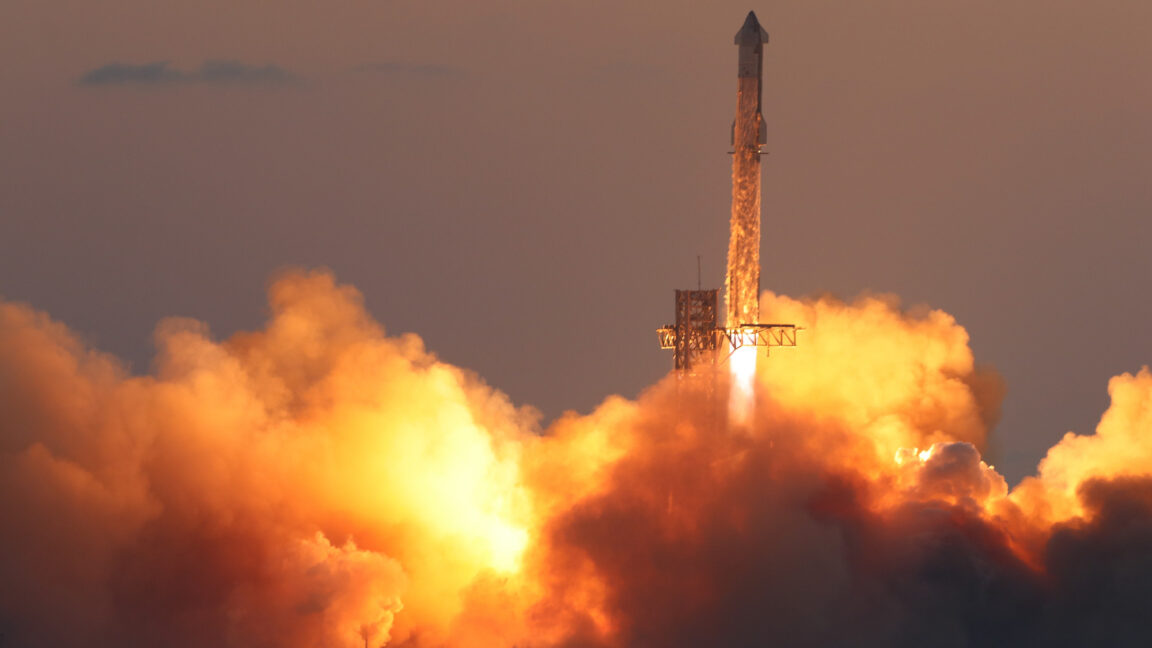
The company will also use Starship's next flight to assess new tiles and other elements of the vehicle's heat shield.
“Several thermal protection experiments and operational changes will test the limits of Starship's capabilities and generate flight data to inform ship capture and reuse plans,” the company statement said. “The flight test will evaluate new secondary thermal protection materials and remove entire sections of heat shield tiles on either side of the ship at locations being examined for capture hardware for future vehicles. The ship will also deliberately fly at a higher angle of attack in the final phase of the descent, purposefully emphasizing the limits of flap control to gain data on future landing profiles.
Last flight of the first spaceship
Starship's five previous flights, dating back to April 2023, all launched near sunrise from South Texas. For the upcoming mission, the company will look for a late afternoon launch window that would allow the vehicle to reenter the Indian Ocean during daylight.
SpaceX's update also confirms that this will be the final flight of the first version of the Starship vehicle, with the next generation including redesigned front flaps, larger fuel tanks and newer tiles and secondary thermal protection layers.
Achieving a near-monthly number of Starship flights in just the vehicle's second year of service is impressive, but it's also essential if SpaceX wants to unlock the full potential of a rocket that will require multiple refueling launches to carry Starship missions to to support the moon or Mars.
Wednesday's announcement comes the day after the US presidential election in which Donald Trump was given a second term by US voters, and significantly, he was aided by a major effort from SpaceX founder Elon Musk.
Musk's interventions in politics were highly controversial and alienated a significant portion of the American population and political class. Nevertheless, Musk's efforts have paid off, as Trump's election is now likely to accelerate Starship's development and increase its central role in the country's space exploration efforts.
However, the timing of this launch announcement is likely coincidental, as SpaceX did not require formal regulatory approval to proceed with this sixth attempt; this was almost entirely dependent on the readiness of the company's hardware, software and ground systems.

